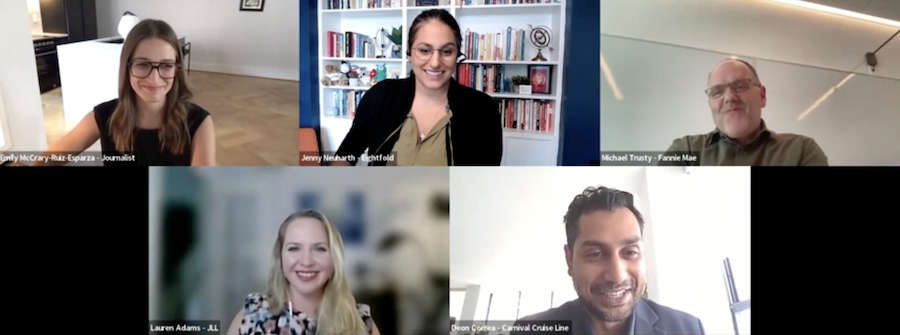Using New Technology to Predict the Skills of the Future


The promise of skills-based hiring has employers excited about bigger talent pools, highly qualified workers, and higher workforce retention. But the specific skills that a given business needs is always evolving–sometimes rapidly. Let’s say your company is ready to fully embrace skills-based hiring. Well, what are those skills that your workforce needs?
For Deon Correa, the senior director of learning and development for Carnival Cruise Line, keeping his workforce skilled-up for the future is a massive undertaking. Carnival Cruise Line operates what are essentially floating cities. A single cruise carries about 1,800 crew members and upwards of 4,000 or 5,000 guests. “We basically manage a skill inventory across all positions,” said Correa. “These could be technical skills, industry-specific knowledge statements, soft skills, leadership skills, and more, so we have to keep this skill inventory current and usable, and we are constantly listening to feedback from internal stakeholders, from leaders, and from team members to gain insights into these skill gaps.”
During From Day One’s July virtual conference on strategies for upskilling and career mobility, Correa and fellow panelists gathered for a panel discussion on using new technology to predict the skills of the future.
“Jobs don’t have skills, people have skills,” said fellow panelist Jenny Neuharth, director of talent-centered transformation of Eightfold, an AI-powered talent intelligence platform. “Historically, what we’ve done is centered around jobs, but talent-centered design flips the operating system. What are the unique skills that the talent has that they bring to the table?”
To suss out incoming trends and job-altering advancements, Lauren Adams, the head of leadership development programs at corporate real estate firm JLL, conducts research like a beat reporter, following events and changes outside the corporate real estate industry and asking, ‘what impact will this have on our future workforce?’
Employers that take regular inventory of the skills in their workforce will have the advantage, said Neuharth. “With the development of artificial intelligence, there are some skills that are moving to automation, so if I have awareness of those skills that are potentially at risk, I could, ideally, change those out prior to the need for having a reduction in force.”
Being made to learn new skills can make some feel that their role is changing in unwelcome ways. For instance, artificial intelligence has many workers sweating over their job security. Mandating that workers adopt AI into their day-to-day feels, to some, like it’s only a matter of time before they’re replaced.
Michael Trusty, the VP and head of learning at mortgage lender Fannie Mae, wanted to show the company’s workers that they had no intention of ditching their workers for a bunch of AI robots. “We hosted an AI expo, open to all employees, just trying to demystify it and not treat it as a threat, but to build on employee curiosity, encourage them to to embrace where we’re going, and to start developing those skills–not approaching it from a perspective of fear,” he said. “I think curiosity can be a great catalyst for learning, so we’re trying to make it a positive experience.”
To train up the workforce on new skills, there’s no need to reinvent the wheel. Trusty is a fan of “the good, old traditional individual development plan. We are very aggressive in pushing those. More than 70% of our employees have active development plans that are helping guide their learning.”

For the panelists, the best–not to mention the most effective and efficient–means of consistently adding new skills to the workforce is to encourage and equip workers to pursue the kinds of skills and learning opportunities they want.
Ultimately, people like to learn, Correa says, and the culture he wants to maintain is one that rewards and celebrates personal growth. “At every level, we focus on continuous learning opportunities,” he said. There’s always some kind of development opportunity to jump into: on-the-job training, mentoring and coaching with real-time feedback, summer internships, emerging leader programs, and rotational assignments. “I’m quite proud of this culture that supports people growing and developing,” he said.
Like those at Fannie Mae, employees at JLL also follow individual development plans, designed, in large part, by their vision of the future. Managers ask their direct reports how they want to develop, then they derive a formal plan to reach those goals. Adams encourages workers to always look forward. For instance, she said, “if you’re currently a facilities manager, what does the future of that role look like?” The business is then there to help, with access to executives at roundtable discussions, skill development opportunities, and even outside resources.
“There is a balance between the actual training for people and providing them learning opportunities, and then there’s the marketing,” Adams said. People need to feel free and enabled to explore new skills and job evolutions. So you have to tell them, “please go out and dive in where you can, continue to develop what you want for your next step,” she said. “It just takes a little bit of cheerleading along the way.”
Emily McCrary-Ruiz-Esparza is a freelance journalist and From Day One contributing editor who writes about work, the job market, and women’s experiences in the workplace. Her work has appeared in the Economist, the BBC, The Washington Post, Quartz, Fast Company, and Digiday’s Worklife.
The From Day One Newsletter is a monthly roundup of articles, features, and editorials on innovative ways for companies to forge stronger relationships with their employees, customers, and communities.